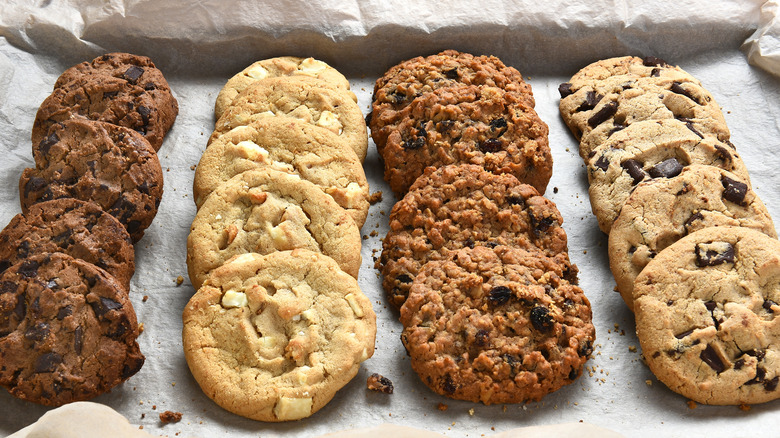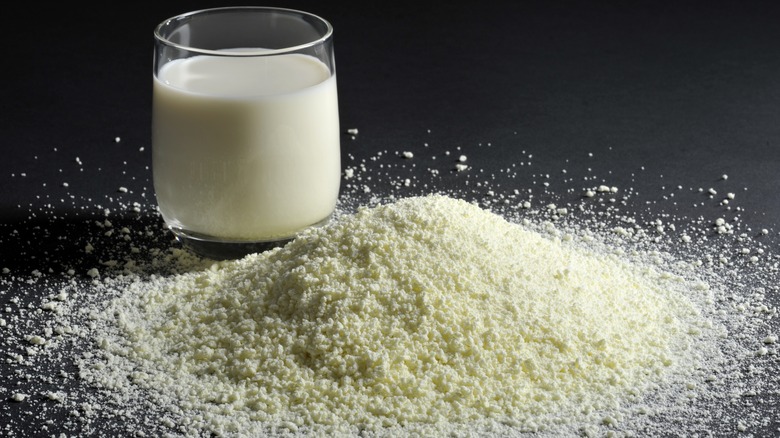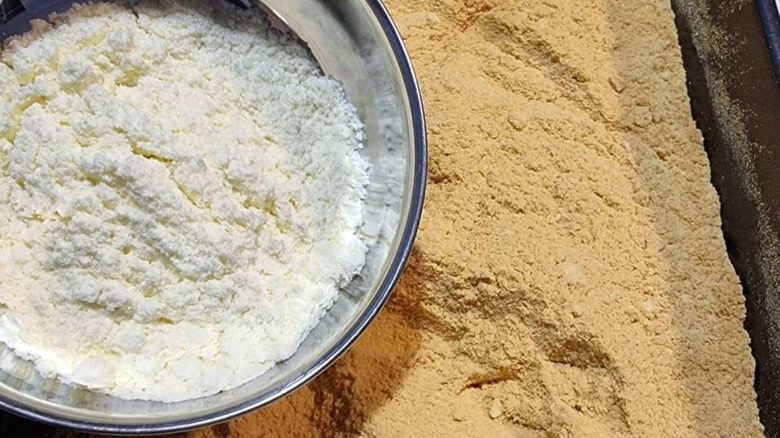You Should Be Adding Milk Powder To Your Cookies
If you're still just making cookies from the recipe printed on the back of the chocolate chip bag or box of flour, it's time to take those treats to a whole new level with inventive and unexpected ingredients. This doesn't mean simply folding in nuts or a dash of sprinkles — those are pretty expected add-ins. We're talking about ingredients that are the secrets of the pros, ones that add a rich, hard-to-describe layer of flavor to cookies — like milk powder.
This humble-looking ingredient is a favorite of British pastry chef Matt Adlard, Milk Bar founder Christina Tosi, and the goddess of everything home and cooking Martha Stewart. Why all the hype for dehydrated milk? The sugars and proteins in milk powder bring an elevated flavor to cookies, as well as other baked goodies like breads, brownies, and sweet doughs. As the cookies bake, the milk powder also helps enhance the beautiful browning on the outside. Here's why milk powder works so well.
Milk powder gives cookies a big boost in flavor
Milk powder may also be labeled as powdered milk, and can usually be found at the grocery store in the same area where evaporated and sweetened condensed milks are stocked. Look for it in cereal box-style packaging, canisters, or resealable pouches. It's made by dehydrating regular, liquid milk to remove all of the water, leaving behind a dry, shelf-stable powder that retains the nutrition and flavor of milk. Just as liquid milk comes in full-fat, low-fat, and skim varieties, the same is true of milk powder.
Adding just a small amount of milk powder to the dry ingredients in cookie dough helps boost the flavor and sweetness of the recipe. The powder has the natural sugars and the milky flavor of regular milk, both of which enhance the other ingredients in the cookie and just make it taste better. Dry milk is also easier to work with in cookie recipes than liquid. Baking recipes have to be fairly precise for the best results; adding extra liquid in the form of milk to cookie dough could cause the baked cookies to spread, over-brown, and lose their shape. However, it's easy to add a tablespoon or two of milk powder to cookie batters without affecting the final texture.
For the very best flavor, toast that milk powder first
While milk powder can be used just as it is, a favorite method of pastry chefs is to first toast that milk powder. To do this, it's simply a matter of stirring dry milk powder in a pan over low heat until it's an even brown color all the way through. "Great British Bake Off" winner Edd Kimber explains on TikTok that this is very similar to the way browned butter is made: by cooking and browning the milk solids. Kimber even amplifies his browned butter by stirring toasted milk powder right into it.
Toasting the milk powder works because this step caramelizes the natural sugars, giving the milk powder a warm nuttiness that creates a beautiful flavor boost when it's added to cookie doughs.
The secret of the baking pros is now your secret too. Whether for chocolate chip, oatmeal raisin, white chocolate chunk, or scotcheroos, adding milk powder or toasted milk powder to your next batch of cookies will make them more luscious and tempting than ever before.


